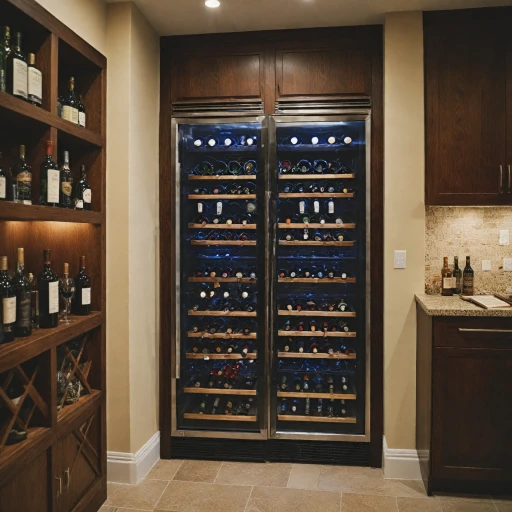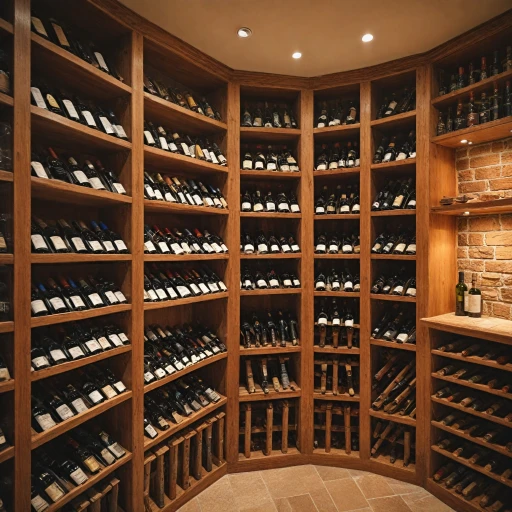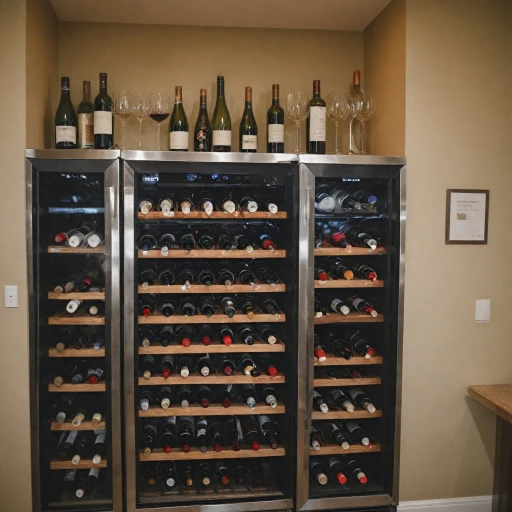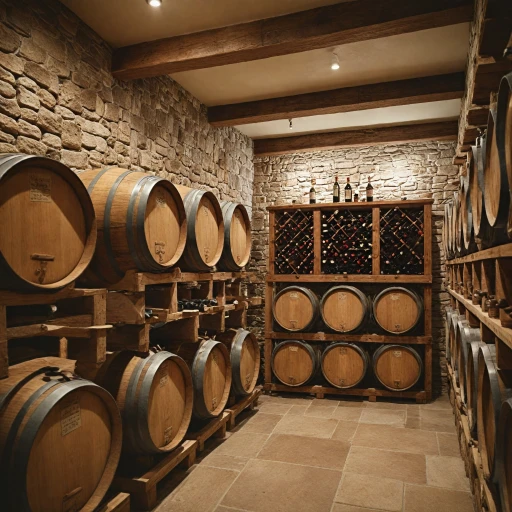The Purpose of a Decanter
The Essential Role of a Decanter in Wine Enjoyment
Decanting is a practice that has been cherished by wine enthusiasts for centuries. At its core, the purpose of a decanter is to enhance the wine's taste and aroma, allowing you to experience the full-bodied flavors that the winemaker intended. When you pour wine from its original bottle into a decanter, you are not just transferring liquid; you are initiating a process that can transform your wine-drinking experience.
One of the primary reasons for using a decanter is to aerate wine. Aeration allows the wine to breathe, which is particularly beneficial for red wines. As the wine is exposed to air, it undergoes subtle chemical changes that can soften tannins and release aromatic compounds. This is especially important for young wines, which might be too tight or closed off straight from the bottle. By decanting, you give these wines the time they need to open up and reveal their full potential.
In addition to aeration, a decanter also plays a crucial role in sediment removal. Older wines, especially bodied reds, often develop sediment over time. Pouring wine into a decanter allows you to separate the clear wine from the sediment, ensuring a smoother taste and a more pleasant drinking experience. This step is vital for maintaining the integrity of the wine's flavor profile.
Choosing the right decanter can also influence the effectiveness of the decanting process. The shape and size of the decanter can impact how well the wine aerates. While some might prefer a simple design, others may opt for more elaborate styles that offer increased surface area for aeration. Understanding these nuances can help you select the best decanter for your needs.
For those interested in exploring more about wine enjoyment, mastering the art of champagne chilling can further enhance your experience. You can learn more about this in our detailed guide on champagne chilling techniques.
How Aeration Affects Wine
Unveiling the Science Behind Wine Aeration
Aeration plays a crucial role in the process of decanting wine, influencing the aromas and flavors to enhance your drinking experience. When you pour wine from its original bottle into a decanter, it gains contact with air, which triggers a series of chemical reactions. This exposure helps the wine's compounds mix with oxygen, allowing them to mellow the harsher notes of a bottle of wine.
Red wines, particularly bodied reds and older wines, benefit considerably from aeration during decanting wine. The process of allowing the wine to breathe not only dictates the overall taste but also determines how some hidden layers unfold. Even light bodied and young wines can benefit from a bit of air.
Both red and white wines require varying degrees of aeration, although white wines generally need less. The impact on the wines also depends on their age and structure. Thus, knowing when to decant and the proper time to let them aerate make all the difference.
Read more about optimal temperature settings for storing white wine which, along with aeration, can impact the overall wine experience. Together with understanding sediment removal and selecting the right decanter, pouring wine becomes not just a routine but an art form. In essence, aerating wine unlocks potential nuances for both the most assiduous connoisseur and the occasional sipper, offering a taste of wine at its best.
Sediment Removal and Its Importance
Why Sediment Removal Matters in Decanting
Sediment accumulation is a natural occurrence in wines, particularly in older and full-bodied reds. This sediment is generally composed of tannins and dead yeast cells, which can develop over time as the wine ages. While this sediment is harmless, its presence can significantly affect the taste and texture of the wine, making it imperative to decant wine properly to enhance the drinking experience.
Decanting wine is a critical step in the art of wine enjoyment. By transferring the wine from its original wine bottle into a wine decanter, you leave the sediment behind, ensuring it doesn't mix back into the liquid when pouring. The effectiveness of sediment removal often depends on careful technique, such as pouring the wine slowly and steadily. Consistent pacing helps ensure that fine particles settle at the top of what remains in the original bottle, leaving the wine poured into your glass sediment-free.
For white wines and light-bodied reds, sediment is usually less of an issue. However, denser and bodied reds can accumulate a significant amount over time. It's worthy to note that while sediment doesn't indicate a spoiled bottle wine, it does warrant specific attention when preparing to enhance the flavor profile through wine decanting and aeration.
Addressing the ramifications of sediment is part of understanding the art and science of wine corks. This ensures that the best possible version of the wine is presented, putting focus on its intended flavors while avoiding gritty textures. For wine enthusiasts, mastering the skill to recognize when sediment removal is necessary enhances both red wines and young wines to their potential.
Choosing the Right Decanter
Choosing an Appropriate Decanter for Your Wines
The choice of a decanter can significantly influence the way a wine unfolds its flavor and aroma, showcasing its full potential. Selecting the right decanter involves considering various factors.
Firstly, take into account the type of wine you're planning to decant. Red wines, particularly bodied reds like Cabernet Sauvignon or Syrah, benefit from decanters with a broad base, which enhances aeration. This is crucial, as it encourages the wine to interact with air, revealing its complex character over time. In contrast, lighter reds and young wines may require less surface area and aeration. White wines are generally not decanted, but in some rare cases, a smaller decanter can be used to enhance very aromatic whites.
When it comes to older wines, the purpose of decanting skews towards sediment removal. For these vintage bottles, the right choice might be a simple decanter that allows for a gentle pour to avoid disturbing the sediment at the bottom. This method will ensure that the taste remains clean and enjoyable.
Material and design play a role too. Crystal or glass decanters are traditional and considered best by enthusiasts because they don’t interfere with the wine's integrity. Moreover, a clear decanter allows you to visually appreciate the color and clarity of the wine while pouring. Opt for a decanter with a well-designed spout for smoother pouring and minimal spillage.
Remember that the choice of a decanter is more than aesthetics; it's about functionality tailored to enhance each wine experience. By selecting an appropriate decanter, you ensure that every pour accentuates the nuanced beauty of your chosen bottle.
Decanting Techniques and Tips
Effective Techniques for Successful Wine Decanting
Investing in quality wine decanters can truly elevate your wine enjoyment experience. The object of decanting is multifaceted; it involves aerating wine to enhance flavors, as well as removing sediment, especially in older wines. Here’s what you need to know about pouring wine effectively.
Firstly, consider the type of wine you're dealing with. Red wines, particularly bodied reds and older varieties, benefit greatly from decanting. Young wines can also see improvement in taste through adequate aeration. On the other hand, white wines typically don’t require as much aeration but do benefit from the appropriate time and method when handled properly.
When you're ready to decant, begin by slowly pouring the wine from the original bottle into the decanter. This technique offers the best opportunity to avoid mixing sediment with the wine. With light-bodied wines, pour gently to minimize agitation, which helps preserve their delicate flavors.
Ensure you have chosen a decanter that matches the wine type; for example, a wide-bottomed decanter works well for aerating wine quickly, while a narrow one suits older reds to control overexposure to air. The key is to pour steadily until the sediment remains in the bottle wine as you near the neck.
Timing is critical. While some may decant wine several hours beforehand, know that not every bottle benefits from extended aeration. Full bodied reds often need only a short period, whereas a more robust aeration might suit others.
Effective pouring and timing are essential to fully enjoy your selection. Proper decanting can unveil the true character of your wine, whether an older red or a fresh, young bottle. Lastly, remember that privacy policy and maintenance of your glassware prevents residues that could interfere with the taste.
Does decanting improve wine taste? Certainly, when done correctly within these guidelines. It's a simple yet impactful way to savor the full spectrum of aromas and flavors contained within your favorite wines.
Common Mistakes to Avoid
Avoiding Common Decanting Pitfalls
In the intricate world of decanting wine, there are several pitfalls that can compromise the quality and taste experience you’re seeking. Whether dealing with young, older, white, or red wines, awareness is the key to successful decanting.
One of the primary mistakes is rushing the aeration process. Aeration, which significantly affects the wine's aroma and flavor profile, requires patience. Allowing the wine ample time to breathe enhances its characteristics, especially with full-bodied and bodied reds. Rushing through pouring wine without sufficient time for aeration can lead to a lackluster tasting experience.
Another error often seen is choosing the incorrect decanter for your bottle of wine. Different wines may require unique shapes to maximize aeration and sediment removal. For example, red wines often benefit from a wide-bottomed decanter that promotes better oxygen exposure, whereas white wines might necessitate a different approach.
Failing to decant wine completely or improperly pouring can leave sediment in the glass. Always ensure you decant slowly and stop before the sediment reaches the neck of the decanter to prevent it from mixing with the decanted wine. This step is crucial for older red wines that naturally develop sediment over time.
Excessive decanting time is another oversight, particularly with light-bodied and young wines that might not need prolonged exposure to oxygen. Over-aeration can lead to oxidation, stripping away the nuances and delicacy of the wine's intended flavor.
Lastly, misunderstanding the role and impact of a decanter may cause missteps. It's important to grasp that not all bottles require decanting. Some wines are best experienced directly from their original bottle. And remember, always pour your decanted wine gently to preserve its fully unlocked character.
Ultimately, decanting wine is an art rather than science, with room for interpretation based on your taste and preferences. Missteps are part of the learning curve, and with practice, you will enhance your appreciation and enjoyment of each bottle you pour.













